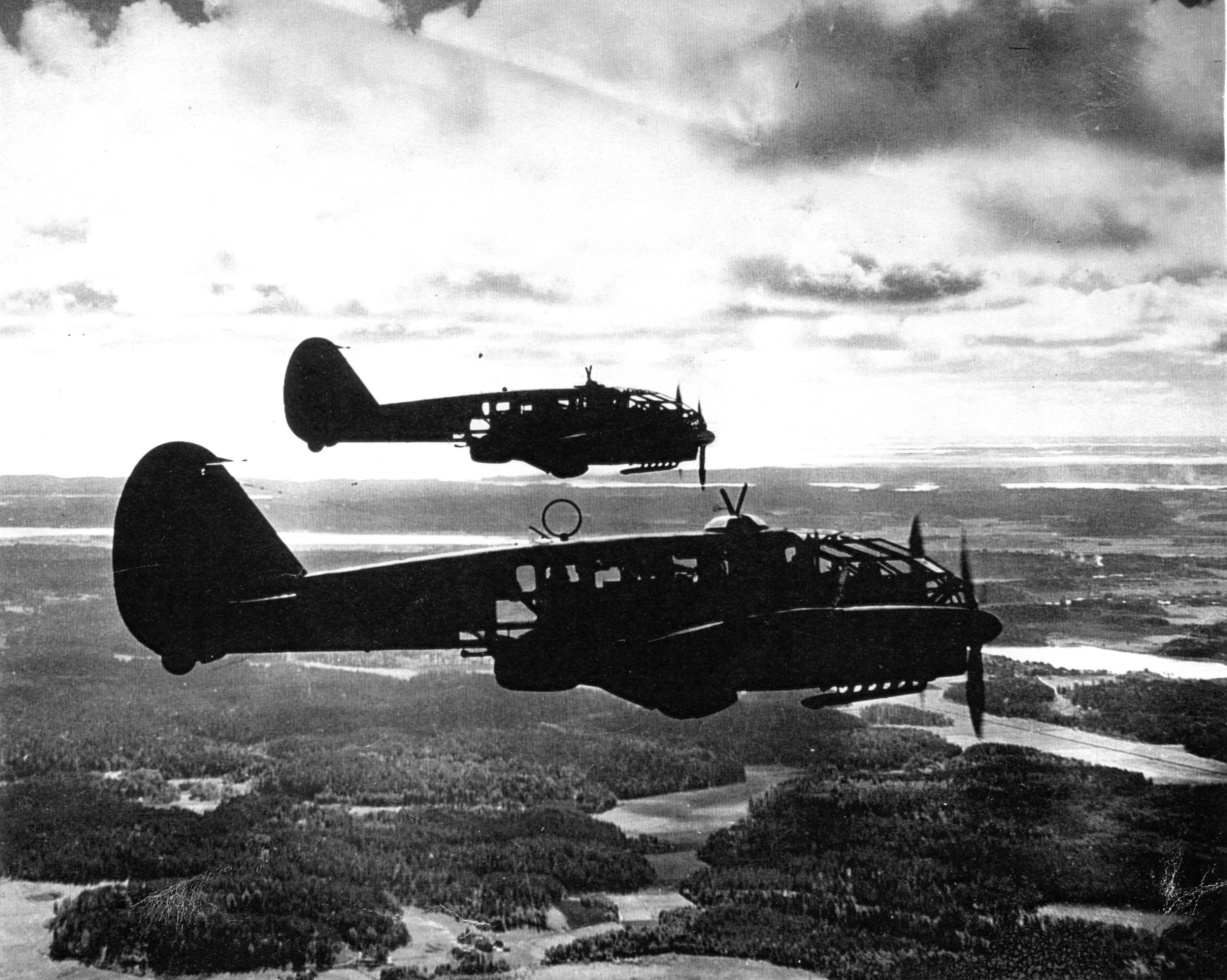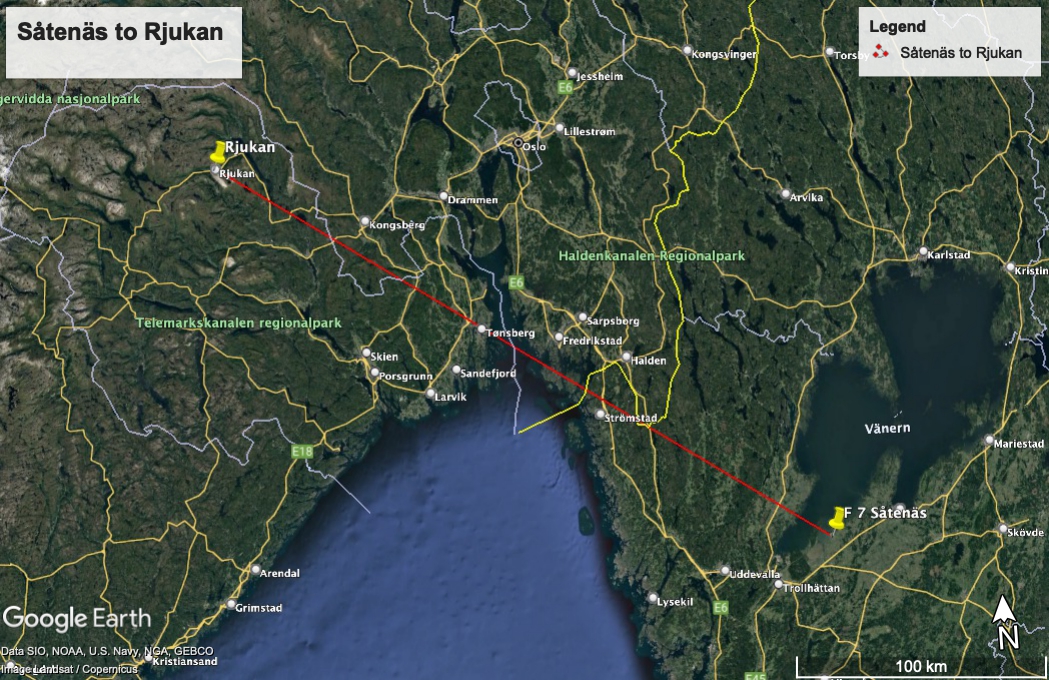The airman Nils describes a perilous reconnaissance mission in Norway 1943, during his time in the Swedish Air Force.
Translated by Mattias Holm.
| Date | Change |
|---|---|
2022-10-08 |
Initial revision |
2023-10-04 |
Added note about the actual date after discovering flight journal entries. |
This story was part of an initial manuscript of a book which was written by a number of Swedish former Caproni pilots. The original manuscript was never published officially. However, part of the manuscript was provided to Mikael Forslund who produced a book, using parts of the manuscript. The book does not include this story, however the history of the Caproni Ca.313 in the Swedish Air Force is quite interesting and I would strongly recommended Mikael Forslund’s Caproni book. Most of the book is in Swedish, but a summary in the book is written in English.
Nils was a Caproni Ca.313 pilot in the Swedish Air Force during World War II.

Comment by Carl Holm: Nils was telling that the commander that gave the order said that they should deny that any order had been given if anything happened…
Comment by Mattias Holm: Nils who was a conscript, stated one time that he was given a temporary officer’s pass during this mission. That way, they would be treated better in case of being captured.
The Date of the Event
Comment by Mattias Holm.
The mission took place on a Sunday in august 1943. This was after the famous commando raids against the heavy water plants on 19 November 1942 and early 1943, but just before the final bombing raids at the plants that took place on 16 and 18 November. As for the exact date of the event in this story, it would be one of the Sundays in August that year, which would be either the 1st, 8th, 15th, 22nd or 29th. It was good weather for a swim, so the temperatures need to be good. There is historical temperature data from SMHI. The temperatures recorded at Vänersborg (not far from Såtenäs) were for the relevant dates the following:
| 07:00 UTC | 12:00 UTC | 18:00 UTC | |
|---|---|---|---|
1 August 1943 |
18.6 |
26.8 |
26.4 |
8 August 1943 |
15.4 |
15 |
13.4 |
15 August 1943 |
12.4 |
18 |
16.4 |
22 August 1943 |
17 |
20.4 |
22.2 |
29 August 1943 |
9.6 |
17 |
14.8 |
|
Note
|
Temperature data is available from SMHI following the Creative Commons Attribution License. |
So we can conclude that the flight most likely happened on either the 1st of August or the 22nd of August. The other dates seem to cold to be offering sunny weather for swimming.
|
Note
|
Subsequently, we have discovered parts of Nils' flight journal. It states for 1943-08-01: Reconnaissance in Norway. Flies over an American B-17 Flying Fortress. My engines are running badly. Need to hand pump us through. Since the 22nd of August is blank, we now believe that this is the date. It was also the warmest Sunday in that month. |
The distance between Såtenäs and Rjukan is 153 NM (283 km), of which 60 NM (111 km) was in Sweden and 93 NM (172 km) in Norway. The minimum trip in the mission was thus 306 NM. The Caproni had a max speed of 233 knots (430 km/h). Thus, the minimum time of the mission would have been 1h 20min (of which 46 minutes would be in the German controlled airspace of Norway). Obviously, actual mission time would be longer.

It is very likely that the photos taken during this mission was used to plan the bombing raids of the 16 and 18 November. My grandfathers contribution to history…
The Story
As told by Nils Holm. Editing and translation by Mattias Holm.
I belonged to a reconnaissance group that was stationed at F 7 Såtenäs, with the task to carry out reconnaissance on naval movements at the western coast and monitoring of the Norwegian border. It was a Sunday in August 1943. We were on backup duty. It was a wonderful day and we sought and was even given permission to head down to Vänern for a swim. It was usually not any emergencies. The guards were notified about our availability.
After about an hour a courier came at full speed and told us that we had to fly a a mission. The orders were sparsely formulated. The defense staff had received information about German troop movements in the area of Rjukan in Norway and wanted pictures. We decided to carry out the mission at highest altitude due to the good visibility, which can be questioned. Due to safety reasons, the planes were not allowed to be in the hangars with topped up oxygen bottles onboard and the oxygen that we were supposed to bring along was in Lidköping. As it was Sunday, the oxygen storage facility was closed. We decided despite this to fly at highest altitude 7000 m. Max altitude without oxygen was 5000 m.
We found our target and the scout took a series of pictures from the nose of the plane. When we turned and the scouts throw over the camera to the other side he passed out due to oxygen deprivation and was then laying sweetly on the floor. I quickly left the target and turned east under a steep dive to get into more dense air. Eventually the scout woke up and he became surprisingly alert when we told him that we had an Me 109 far behind us on the same course. For safety reasons we dove down to minimum altitude and was not bothered by it anymore.
.jpg)
We took it quite easy because we hade the understanding that the Me pilots in Norway were completely harmless. They were supposedly rookies under schooling on the plane type. Later they became more dangerous because Norway was used as a recreational resort to rehabilitate mentally exhausted pilots.
During the night, a plane had supposedly landed and took off at F 7. Rumours were circulating that it was an English Mosquito that had picked up our photos. Maybe we were not as neutral as they tried to tell the Swedish people.
